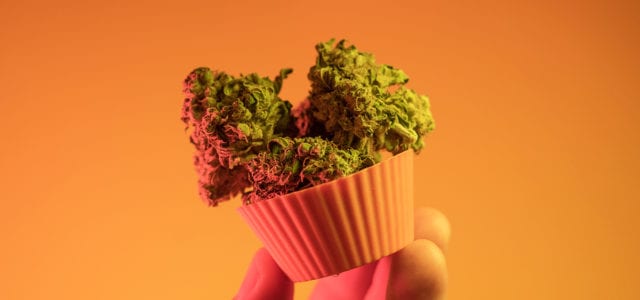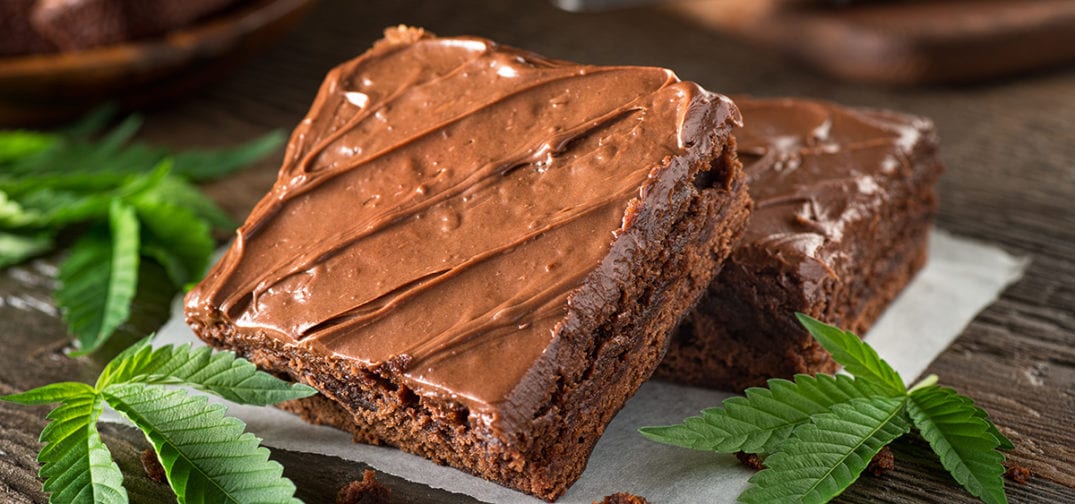When you think of cannabis edibles, what comes to mind? Is it the classic brownie, the most famous edible of them all, or perhaps you think of gummies, opting for a more modern and whimsical option? Or maybe, thinking more technically, you consider the various methods of making edibles and start to wonder, “Where did this all begin?” or even, “Where is this all headed?”
Origins of Cannabis Edibles
The earliest cannabis edibles can be traced to 10th century India. Crushed buds were used to make a drink called Bhang, which is still popular to this day. Made with pulverized cannabis, ghee, assorted spices, and milk, it was used back then to help one sleep or regain their appetite.
Fast forward to the late 1960s with the inception of the now-famous “pot brownie.” Would you believe the 1960s’ infused edibles “boom” began with their appearance in a movie? Hippies were fascinated by them and made baked cannabis infusions out of almost anything — brownies, cookies, you name it! At this point, cannabis edibles were also being embraced as a life-altering medication for AIDs patients in California, setting activists like Dennis Peron and ‘Brownie Mary’ Rathbun down the path of advocating for medical cannabis legalization.
How to Infuse Foods
Now, about that most famous ingredient for infused edibles: cannabutter. You may be wondering: how does THC magically wind up inside a simple table spread? It begins with a process called decarboxylation, commonly known as decarbing. This process activates the cannabis compounds which you can then infuse with your base oil. To achieve decarboxylation, just bake your bud in the oven for about 45 minutes at 220 ºF. Next, add your decarbed weed into some butter and simmer it for 6-8 hours, making sure to stir the mixture thoroughly about every 20 minutes. Finally, once you’re done simmering, just strain the weed from your butter into a container.
Congratulations, you just made cannabutter! If you’re lactose intolerant or just not into butter, you can also try this with an assortment of oils, including coconut and olive oils.

Moving on to tinctures, which these days are most commonly CBD oil products that come in little amber-colored dropper bottles. A lot of people use these CBD tinctures to relieve pain and for other health reasons, as it absorbs quickly and dosing is as easy as holding the liquid under your tongue for a minute or two.
Many cannabis tinctures, however, are also made with ethyl alcohol, which is, of course, edible and also high-proof. This is nothing new, as alcohol has been used for years as a solvent in herbal tinctures. Another great trait is that the alcohol helps to preserve the tincture’s shelf life, which can you save a bit of money in the end.
Also, concentrated products such as shatter and other oils have their own uses for ethyl alcohol. In a process known as the Soxhlet technique, the alcohol strips plants of their cannabinoids for infusion. The ethanol is boiled, condensed, and then cooled down. Then, the ethanol is used to soak the plant — note, this method is most frequently used for creating smaller batches.
Types of Cannabis Edibles
These days, we’ve gone far beyond what’s now common (i.e. old-school weed brownies, cookies, and even gummies). Nowadays, the word “edible” could include a savory medicated dinner, bubbly beverages, and more. In fact, there are a plethora of assorted snacks you can grab from dispensaries, so if you’re over sweets, trade them in for medicated salty snacks like cheese curls or potato chips. In terms of beverages, you can find sodas, syrups, and even CBD-infused water.
Lastly, the biggest change (and newest trend) when it comes to cannabis edibles are infused meals and other savory dishes. You can find these easily on Instagram, where home-based chefs have started preparing entire medicated meals that they want to share with the masses. Whether they’re making simple platters, a quick bite, or a whole spread, home chefs are not playing around these days when it comes to infusing meals. For example, imagine an entire roast beef platter with creamy mashed potatoes and a savory, silky gravy — now, imagine every part of that meal being infused with cannabutter or another oil. Or how about a thick-cut corned beef or Reuben sandwich, but with an infused Thousand Island dressing? Or even some barbecued ribs with, you guessed it, infused sauce? Some cooks have even gone as far as to make cannabis-infused spices!
Now that we’ve covered the varius popular edible products and where they came from, you might want to get your hands on some of these new trends and offerings — the trick is finding out whether or not any of the good stuff is in your area. For help finding and partaking in any of these potential goodies in your area, consult Instagram (the preferred social media platform for most cannabis influencers) with the appropriate hashtags. Also, check your local dispensary menus and see if they may be hosting any infused cooking lessons or other events, as this is also a growing trend with more and more legal markets coming online.
Get daily cannabis industry news and insights. Subscribe
End
